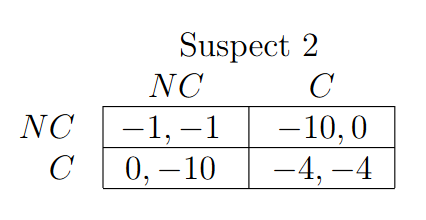Within our complex and messy world, we are often faced with the existence of suboptimal realities that seemingly makes no sense. This article attempts to draw upon Game Theory to provide some theoretical insight into why these realities come to be, and from a simplified model, extrapolate what could be done to change the status quo.
It starts off by defining a concept introduced in class based on the idea of a coordination game. The article defines coordination game slightly differently, but in essence the idea is that the optimal strategy OVERALL is for players to cooperate and choose the same option. This provides a somewhat looser definition from lecture, where the optimal strategy for each player is to coordinate with the other. Therefore, the given article classifies the Prisoner’s Dilemma as a coordination game.

Regardless, the idea of a coordination failure still holds: when players choose an optimal strategy for themselves and based off limited information, it results in a situation that is not the best overall.
The article proceeds to then relate this concept to many unfortunate situations in the professional world, and in life. For example, it mentions academic journals charging heavily for readership leading to the throttling of the spread of scientific knowledge, or the nuclear arms race that world superpowers willingly participate in; it even alludes to the doping example provided in lecture. Any casual reader might find it extremely discouraging, faced with such a bleak picture of the world.
However, while there is a level of cold indifference in this type of analysis, Game Theory in it of itself does provide insight into how we can begin to solve such problems at a society level. The idea being, that from an outsider’s perspective, we can easily see what the better path to take and if we know what others know, it is easier to generate decisions that benefit everyone.
Thus, the article concludes that through large scale communication and the organization of groups, can collective action be taken to push against conventions that are damaging for everyone. Pro-active coordination, unsurprisingly when taken from the simplified version of the real world that coordination games seek to model, is the key to finding and establishing better equilibrium against challenging circumstances.
Link – Coordination Problems: What It Takes to Change the World